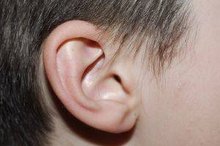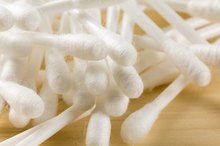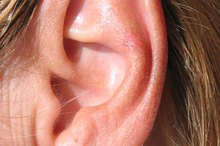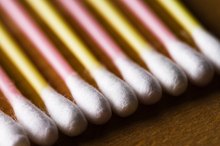What does fact checked mean?
At Healthfully, we strive to deliver objective content that is accurate and up-to-date. Our team periodically reviews articles in order to ensure content quality. The sources cited below consist of evidence from peer-reviewed journals, prominent medical organizations, academic associations, and government data.
- Medline Plus: Wax Blockage
- PubMed Health:The Ear: How Can You Keep It Clean
- PubMed Health:The Ear: How Can You Keep It Clean
The information contained on this site is for informational purposes only, and should not be used as a substitute for the advice of a professional health care provider. Please check with the appropriate physician regarding health questions and concerns. Although we strive to deliver accurate and up-to-date information, no guarantee to that effect is made.
The Best Way to Clean Out Your Ears
A once-a-month ear cleaning is a good hygiene practice to prevent hardened wax from blocking the eardrum. To protect the ear canal from permanent damage, never stick anything -- a pencil tip, cotton swab, paper clip or bobby pin -- into the ear canal. It is important, however, to use a safe and gentle ear-cleaning method to remove the wax build-up in the outer ear canal without creating an environment for infection.
If you are experiencing serious medical symptoms, seek emergency treatment immediately.
Apply 3 to 4 drops of baby oil into your ear before bedtime using a syringe. You can buy a syringe--without the needle--at most drug stores. To apply the drops, tilt your head with the ear you're cleansing facing up, towards the ceiling. Hold your earlobe out and up to help the oil easily enter the ear canal.
Read more about how to clean ears with mineral oil.
Can You Remove Ear Wax with Baby Oil?
Learn More
Place an oil-soaked cotton ball into the outer ear opening to keep the oil from leaking out onto clothing. If the cotton ball is too large for your ear, cut it in half to make it a comfortable size.
Allow the baby oil to remain in your ear for 15 minutes. You may sleep with the oil in the ear, but only if you have a wax blockage 1. A blockage will take longer to soften. For standard ear cleansing, 15 minutes is a more than adequate.
How to Remove Impacted Ear Wax
Learn More
Remove the cotton balls from your ears and discard. Fill the syringe with warm water and, holding the earlobe up and out as before, apply half of the syringe's contents to your ear. This will flush out any loose wax or debris.
Remove the water from your ear by placing a towel against the ear and turning your head, affected ear down, to allow the water and loosened wax to work its way out of your ear canal. Repeat all steps with the opposite ear.
Read more about how to suction the ear canal.
Warnings
Never stick hair pins or cotton swabs into the ear as this increases risk of infection and pushes wax deeper into the ear, forming a complete blockage.
Related Articles
References
Warnings
- Never stick hair pins or cotton swabs into the ear as this increases risk of infection and pushes wax deeper into the ear, forming a complete blockage.
Writer Bio
Sharin Griffin has been a freelance writer since 2009, specializing in health-related articles. She has worked in the health-care industry as a certified nursing assistant and medical technician. Griffin's medical expertise encompasses bariatrics and geriatric care, with an emphasis on general medicine. She is completing an associate degree in health-care administration from Axia University.









